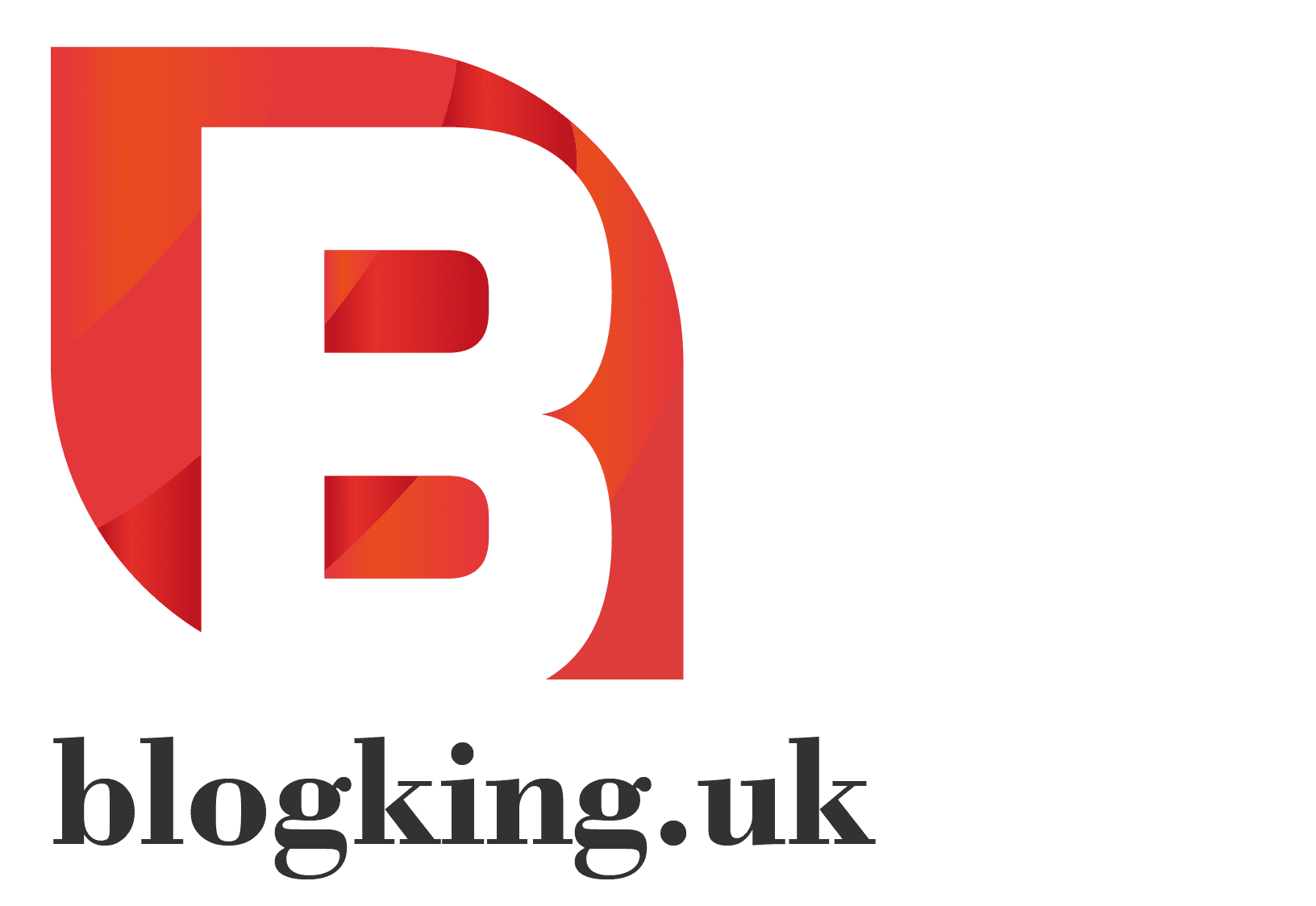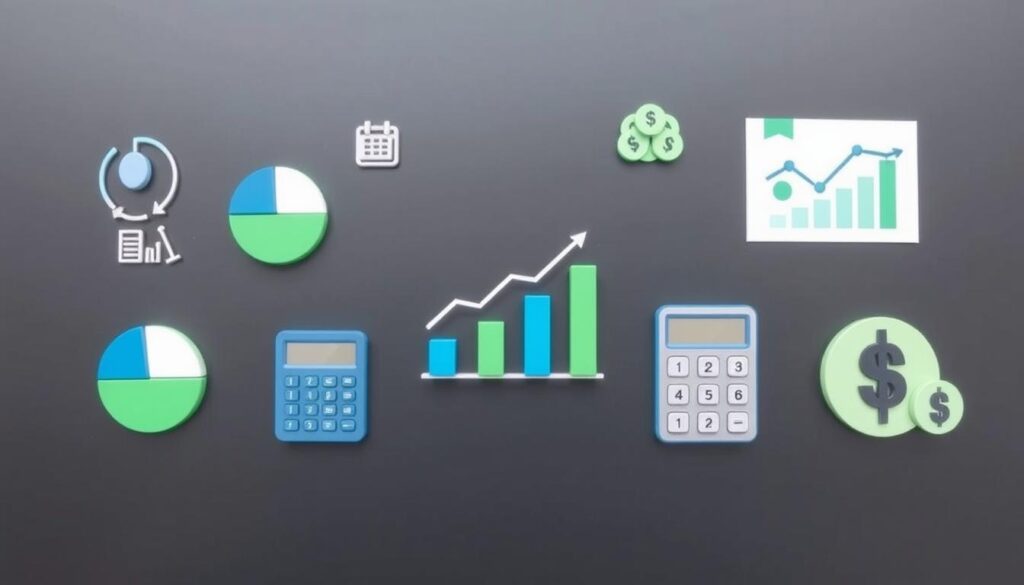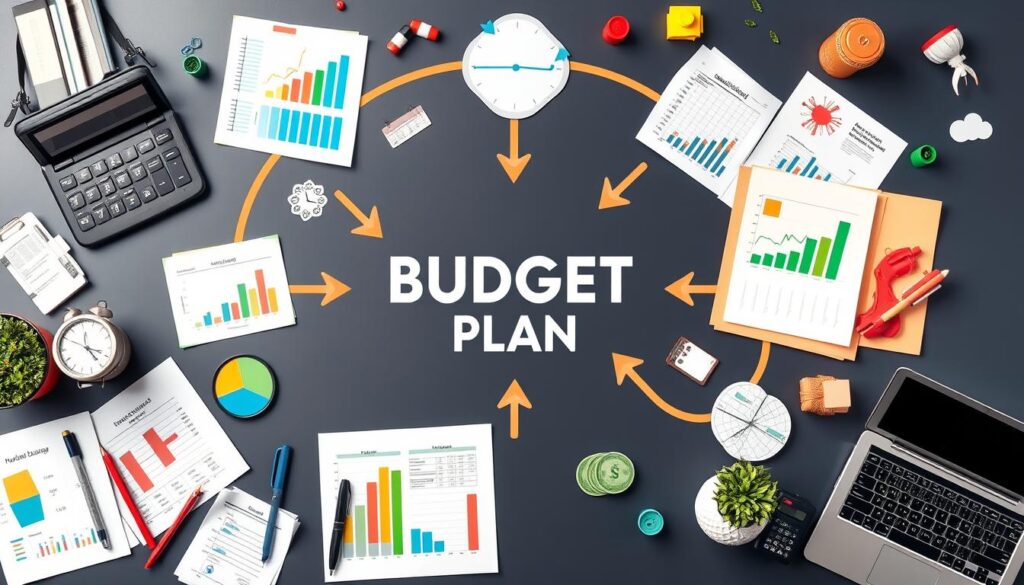Imagine running a busy café in London and suddenly facing unexpected costs. While making delicious desserts and coffee, you might forget about the money until the bills arrive. This is a common problem; businesses need good budgeting to stay profitable and strong against surprises.
A 2019 McKinsey survey found that over half of executives were unhappy with their budget’s clarity. This shows how important budgeting is for businesses. A good budget helps manage resources and make smart financial decisions. It’s key for keeping a business profitable.
In this guide, we’ll explore the different parts of business budgeting. We aim to help you manage your finances well.
Table of Contents
Key Takeaways
- Effective budgeting is essential for financial planning and management.
- A transparent budget helps businesses allocate resources and responsibilities effectively.
- Over half of executives acknowledge challenges with their budget’s clarity.
- Budgets motivate employees through clear targets and evaluation metrics.
- Zero-based budgeting has gained popularity post-pandemic to optimise resource usage.
- Understanding budget dynamics can prevent overspending and financial loss.
- Establishing a robust budget can align various teams towards shared objectives.
What Is Business Budgeting?
Understanding business budgeting is key for good financial management. It helps organisations make a detailed financial plan. This plan shows what income and expenses are expected over time, like monthly or yearly.
Business budgeting helps plan finances well. It makes sure resources are used right to reach goals.
Definition and Overview
Business budgeting is like a financial roadmap. It gives a clear view of what financial performance is expected. It includes projecting income and costs, like operational expenses and profits.
By making a detailed budget, businesses can predict their financial needs. They can also check how they’re doing against their goals.
Components of a Business Budget
Key parts of a budget are important for a good financial plan. These include:
- Revenue: Expected income from sales and services.
- Expenses: Costs of running the business, split into:
- Fixed Expenses: Costs that stay the same, like rent or salaries.
- Variable Expenses: Costs that change with sales or production.
- One-time Expenses: Costs that happen only once, like buying equipment.
- Profit: Income minus total costs, shows financial health.
- Cash Flow: Money coming in and going out, keeps business liquid.
By watching these budget parts, businesses can make smart choices. They can use resources better for more efficiency and effect.
The Importance of Budgeting in Business
Understanding the role of budgeting in business is key to success. It helps plan your finances for growth and stability. We’ll look at three main areas where budgeting is vital: ensuring resources, setting financial goals, and prioritising projects.
Ensures Resource Availability
Good budgeting ensures you have the resources you need. It helps track your money, spotting where you might overspend. This lets you save for important operations and fix any financial issues early.
Facilitates Financial Goal Setting
Setting clear financial goals is critical for business success. Budgeting gives you a plan to reach these goals. It lets you track progress and keep everyone working towards the same targets.
Helps Prioritise Projects
Choosing the right projects is essential for success. Budgets help decide where to spend money, focusing on key projects. This way, your business can concentrate on what’s most important.
| Aspect | Benefits |
|---|---|
| Resource Availability | Ensures efficient allocation of funds, identifies weaknesses |
| Financial Goal Setting | Aligns targets with strategy, fosters accountability |
| Project Prioritisation | Focuses resources on high-impact initiatives |
Types of Business Budgets
It’s key to know the different budgets for good financial management. Each budget type has its own role, covering different business areas. Here’s a look at main types like zero-based, static, and flexible budgets, and others that might fit your needs.
Zero-based Budgeting
Zero-based budgeting starts with zero. You justify every expense each period. It makes you focus on what’s important and cut unnecessary costs.
Static and Flexible Budgets
The static budget doesn’t change during the period. It’s good for places with steady income and expenses, like government or non-profits. The flexible budget, on the other hand, changes with sales and production. It’s great for businesses that need to adapt quickly.
Performance-based and Activity-based Budgeting
Performance-based budgeting gives money for specific goals. It makes you accountable for results. Activity-based budgeting looks at costs for reaching goals. Knowing these can help you make your business better and spend wisely. For more on budget types, check this resource.
How to Create an Effective Business Budget
Creating a good business budget needs careful planning and forecasting. You should look at past data and current trends to predict future earnings and costs. Knowing both fixed and variable costs helps set realistic financial targets.
A good budget includes sales, investments, and one-off expenses like buying new equipment. This helps you plan better for the future.
Financial Analysis and Forecasting
Starting with a detailed financial analysis is key. Use last year’s earnings to estimate this year’s. Making budgets for months or quarters helps keep things on track.
Remember to include fixed costs, variable expenses, and unexpected costs. This gives a clear picture of your financial health.
Implementation and Evaluation
After making the budget, it’s important to follow it closely. Create an “actual budget” after the budget period to compare estimates with reality. This helps make future budgets better.
Regularly checking your budget helps spot any issues. You can find more tips on budgeting and spending online.
| Type of Cost | Description | Examples |
|---|---|---|
| Fixed Costs | Recurring expenses that do not change with the level of production or sales | Rent, utilities, subscriptions |
| Variable Expenses | Costs that fluctuate based on business activity | Shipping, commissions, labour |
| One-Time Expenses | Occasional costs that arise outside of regular operations | Equipment purchase, new product development |
| Unexpected Costs | Unforeseen expenses that require immediate attention | Security breach response |
In conclusion, aim to balance your expenses and income for financial stability. Regular financial checks and budget reviews improve your business’s efficiency and profits.
Budget Planning: Key Steps to Follow
Effective budget planning involves several key steps. Each step is vital for reaching your financial goals. By knowing your income and expenses well, you can plan for success.
Setting Realistic Goals
Starting with realistic financial goals is key. These goals should be clear, measurable, and match your business strategy. This helps you focus on what’s important and make smart spending choices.
Identifying Income and Expenses
Then, you need to know your income and all your costs. This includes fixed, variable, and one-time expenses. Knowing this helps you predict your cash flow and see what funds you have for different projects. For more on this, check out financial planning guidelines for structure and forecasting.
Allocating Resources
With a clear view of your income and expenses, it’s time to allocate resources. This means giving funds to the most important areas first. This way, you make sure key projects get the money they need while keeping overall spending in check.
Effective Financial Management Strategies
Good financial management means watching your spending and making budget changes to grow and make more money. It’s about checking how your finances are doing against your budget. This helps spot any spending issues or ways to work better.
Monitoring Financial Performance
Keeping an eye on how your finances are doing is key. By comparing what you thought you’d make to what you actually did, you can see if you’re on track. This might include:
- Tracking projected sales to understand future revenue.
- Calculating fixed costs, such as rent and utilities, alongside variable costs like inventory and marketing.
- Regularly reviewing and updating budgets to stay on track and identify areas for cost savings.
Using cloud accounting software can make this easier by recording transactions as they happen. It’s good to use codes for expenses to see where your money is going. Also, keep your business and personal money separate to stay organised.
Adjusting Budgets as Needed
Changing your budget is a big part of managing money well. You might need to update your budget because of unexpected costs or changes in the market. Important steps include:
- Forecasting cash flow based on historical data to estimate future positions.
- Planning budgets and cash management with foresight for anticipated funding needs.
- Evaluating financial statements to assess the current financial position and adjust future strategies.
By using these methods, you can make sure your money management fits with your business goals. Keeping an eye on your finances and making budget changes on time is key. It helps improve your business plans and keeps your finances healthy.
Budget Tracking and Analysis
As your business grows, managing your finances becomes more important. Budget tracking and analysis help you check if your spending matches your plans. This way, you can spot any differences and make smart changes.
Comparing Budget vs Actual Expenditures
It’s key to compare your budget with what you actually spend. This helps you see how your business is doing financially. By looking at these differences, you can find out where you might be spending too much or not enough.
Setting Up Budget Tracking Tools
There are many tools to help with this, each with its own benefits and drawbacks. Spreadsheets are flexible and cheap but can take a lot of time and might have mistakes. Budgeting software is easy to use and tracks things in real-time but might cost money and take some getting used to.
Personal finance software gives a full view and works on your phone but might not have all the features you need for business. Tracking receipts is accurate but can take a lot of time. Using bank and credit card statements is accurate but might miss some transactions because of limited categories.
To improve your budgeting, using the right tools is key. These tools help keep your records accurate and give you insights into your money. With the right tools, you can do a detailed expenditure analysis to make sure your spending matches your goals over time.
| Tracking Tool Type | Strengths | Weaknesses |
|---|---|---|
| Spreadsheet Software | Flexibility, Cost-effective, Widely available | Time-consuming, Prone to errors, Limited reporting capabilities |
| Budgeting Software | Ease of use, Real-time tracking, Advanced reporting | Cost, Learning curve, Limited customization |
| Personal Finance Software | Comprehensive view, Automated categorization, Mobile access | Limited business-specific features, Data privacy |
| Receipt Tracking | Accurate record-keeping, Easy expense reporting | Time-consuming, Prone to loss or damage |
| Bank and Credit Card Statements | Accurate record-keeping, Easy reconciliation | Limited categorization, Missed transactions, Timeliness |
Benefits of Business Budgeting
Budgeting has many benefits, key to a company’s financial health. It helps control costs, manage cash flow, and predict profits better. These are vital for a strong financial base.
Improved Cost Control
A good budget helps spot where money is wasted. It lets you focus on what’s profitable. This way, you can grow and handle money problems well.
Enhanced Cash Flow Management
Budgeting gives a clear view of money coming in and going out. This helps make smart financial decisions. It keeps your business stable and running smoothly.
Higher Profit Forecasting Accuracy
Good budgeting leads to more accurate profit predictions. This is key for planning and growing your business. It builds trust and helps use resources wisely.
| Benefit | Description |
|---|---|
| Cost Control | Identifying excess spending and reallocating resources effectively. |
| Cash Flow Management | Monitoring anticipated inflow and outflow for financial stability. |
| Profit Forecasting Accuracy | Improving predictions based on historical data for strategic alignment. |
Conclusion
Budgeting is key in business. It’s a basic part of managing money well. Good budgeting helps companies make smart choices and use resources wisely.
It’s vital for reaching long-term goals. For example, healthcare companies saw a 25% boost in meeting their goals with good budgeting.
Also, the manufacturing sector saw a 20% jump in financial stability thanks to careful budgeting. This planning helps in being open and accountable. It also helps in avoiding big financial risks.
In the insurance world, there was a 15% drop in financial risks. This shows that planning ahead helps companies deal with money problems better.
In short, seeing budgeting as a must helps create a culture of money awareness. It lets you keep an eye on and tweak plans as the market changes. By using the tips from this guide, your business can grow and perform well in a tough market.
FAQ
What is the importance of budgeting in business?
Budgeting is key for managing money well. It helps businesses use resources wisely, keep costs down, and make more money. It acts as a guide for making smart money choices, helping companies face challenges and grab opportunities.
What are the main components of a business budget?
A business budget includes income, different types of expenses, profit, and cash flow. Knowing these parts helps with planning and using resources well.
How does budgeting help in financial goal setting?
Budgeting helps set clear money goals by planning income and expenses. This ensures resources go to things that help meet the company’s big goals.
What are the different types of business budgets?
There are many types of business budgets. Zero-based budgeting means justifying every expense. Static budgets stay the same. Flexible budgets change with performance. Performance-based and activity-based budgets focus on specific goals and activities.
How can I create an effective business budget?
To make a good business budget, do a deep financial analysis. Forecast income and expenses, and set achievable goals. Then, put it into action and keep checking how it’s doing.
What steps should I follow for budget planning?
For budget planning, start with realistic goals and know all your income and expenses. Then, use resources based on what’s most important. This makes your business run smoothly.
How can I monitor financial performance against the budget?
Keep an eye on how your budget is doing by comparing planned and actual numbers. Having review meetings helps make budget changes when needed.
What tools can I use for budget tracking and analysis?
Use accounting software or spreadsheets to track your budget. They show how your finances are doing in real-time. This helps spot areas to improve.
What are the benefits of effective business budgeting?
Good budgeting means better cost control, managing cash flow, and accurate profit forecasts. These benefits help your business grow and stay stable, making it financially strong.






